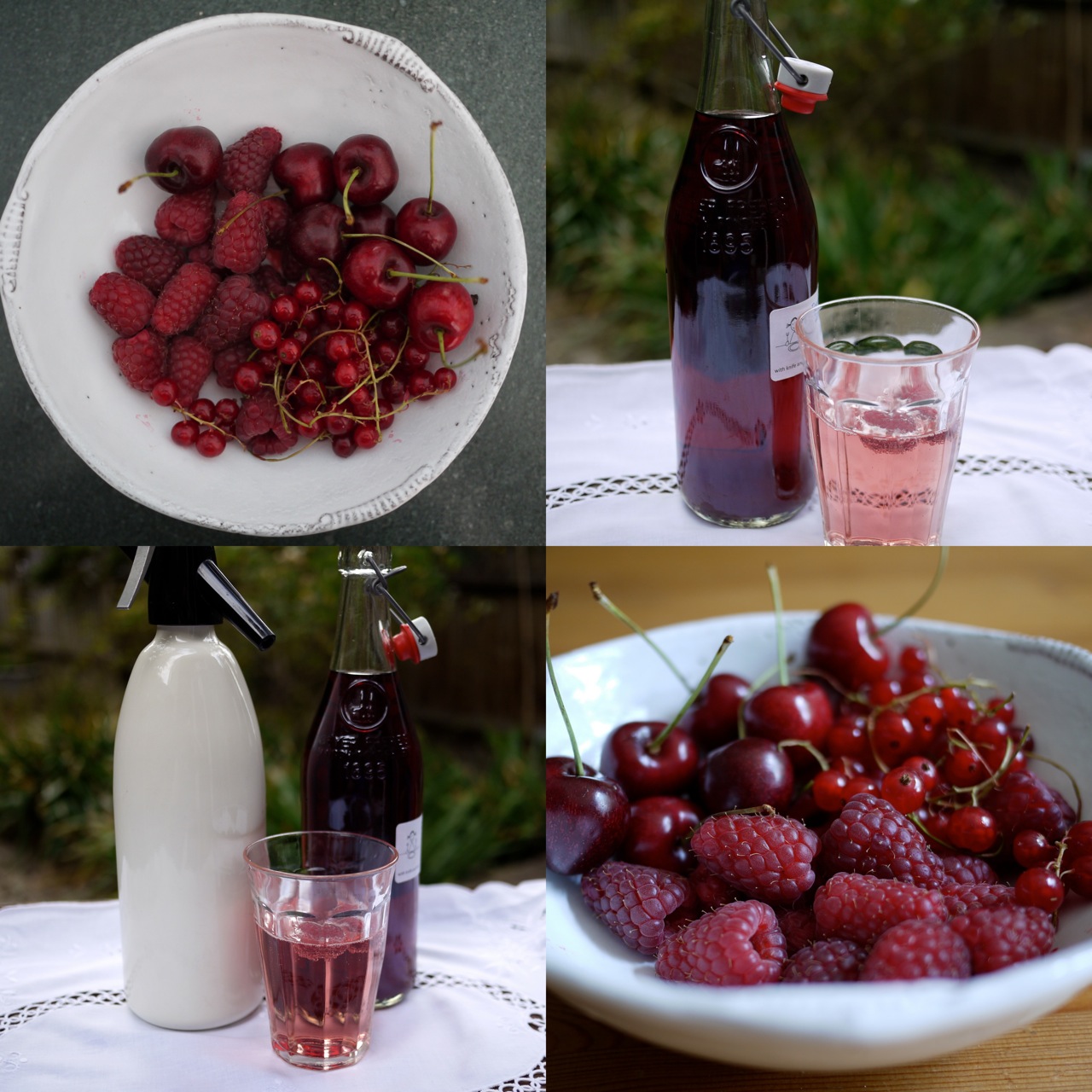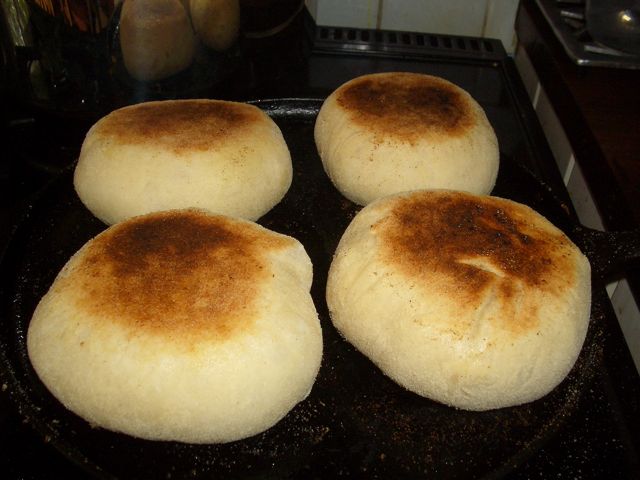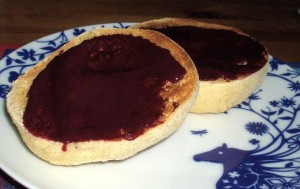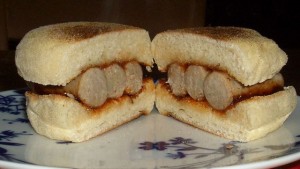At last the English fruit season has arrived. The gooseberries and strawberries are in full flow and the raspberries, cherries and currants (black, red and white) are all just starting to come into their prime. For all these fruits when the season starts and end is inevitably affected by the weather and where you are in the country, some have much longer natural seasons than others and making the best of each while you can is what its all about.
I like them fresh of course, or cooked in compotes, sauces and pies and some preserved to bring a little summer light into the autumn and winter. All these fruits are native to Britain in some form although the varieties we eat now hail from the experiments of plants-men across Europe and America. Cherries were being cultivated in Britain during the middle ages, gooseberries in the 15th century, black (and other) currants and raspberries in the 1600s. It seems that strawberries are very much the latecomers to the party only really becoming widely grown from the 19th century onwards.
I just can’t resist pinching a few cherries from the bowl each time I pass so they never last long enough to be made into anything, perhaps if I had a cherry tree I might manage to save a few for other things. This year I’m going to see if I can find enough (and not eat them all first) to try pickling some as I think they would be wonderful with a cooked ham in the depths of winter. And red, black or white currants are a tasty counterpoint to other fruits especially in summer pudding.
But truth be told its raspberries I love the most.
Fortunately the different varieties mean the season lasts from late June to Autumn. I have a theory that you are either a raspberry or a strawberry person at heart. Given a choice of both most people I know always plump for the same one, few dither, unsure as to which to have this time. Its not quite on the scale of a marmite love-hate thing but its there, strawberries OR raspberries is the way it seems to go. In Simply British Sybil Kapoor suggests raspberries are regarded with deep affection not adulation; I think she might be right.
Me, I’m a raspberry person through and through. The fresh fruit is better, the jam is better, better in tarts, just better. Faced with delicious, plump, wonderfully fragranced version of each raspberries always win and I’m happy to say no to strawberries even if there is no alternative. Their sweetness seems too saccharine, their texture odd; I like the slight tart edge and depth of flavour that even the sweetest raspberry has.
Although I’m not alone in this love of raspberries the majority seem to prefer strawberries seeing them as the perfect example of a British summer. The Johnny come lately to the table seems to have usurped the more historic fruit, with Bunyard musing in The Anatomy of Dessert why raspberries and cream are so much less popular than strawberries and cream. I suspect it’s that tart edge. He suggests a drop of champagne makes the raspberries more delicious. It might also be the connection raspberries have with use in tonics for the stomach and other ailments, but the old vinegar recipes I’ve found sound really refreshing as a drink and no comparison to the raspberry vinegar madness of nouvelle cuisine. And apparently made with malt vinegar it’s used to dress Yorkshire puddings!
Raspberry Vinegar
I love the wording of this early 1920’s recipe from Kitchen Essays by Agnes Jekyll:
“Take 1 lb. raspberries to every pint of best white vinegar. Let it stand for a fortnight in a covered jar in a cool larder. Then strain without pressure, and to every pint put ¾ lb. white sugar. Boil 10 minutes, let cool, and bottle in nice-shaped medium-sized bottles saved perhaps from some present of foreign liqueurs or scent. A teaspoonful stirred into a tumbler of water with a lump of ice, or introduced to a very cold siphon, will taste like the elixir of life on a hot day, and will be as pretty as it is pleasant.”
In my case I suspect its memory that holds the key to my love of raspberries….a walk, some French cricket then picking raspberries from my grandad’s raspberry patch and having then at tea with thick golden Jersey cream. It sounds all rather grand and Merchant Ivory but it wasn’t, it was suburban Liverpool in the 1980s, you can grow great raspberries plenty of places if you try. I’m sure we only ever had the raspberries with thick cream, simple and delicious, maybe occasionally my grandad made a flan with them, one of those classic sponge flan bases you could buy and probably a teeny bit of jelly to hold the whole thing together, but there was still always served with Jersey cream. It sounds so retro now, raspberry flan, I’m sure its time for a reinvention…..I’m hoping to perfect one for the blog soon but initial trials are hampered by the raspberries constantly going missing….someone here clearly has a deep affection for them!
This blog post was first published in Francoise Murat & Associates July Newsletter.










 Hmmm looks like a bunch of weeds in a badly tended garden if you ask me…..but hold one we are going to find at least FOUR, yes that’s four, edible goodies in this patch.
Hmmm looks like a bunch of weeds in a badly tended garden if you ask me…..but hold one we are going to find at least FOUR, yes that’s four, edible goodies in this patch.









